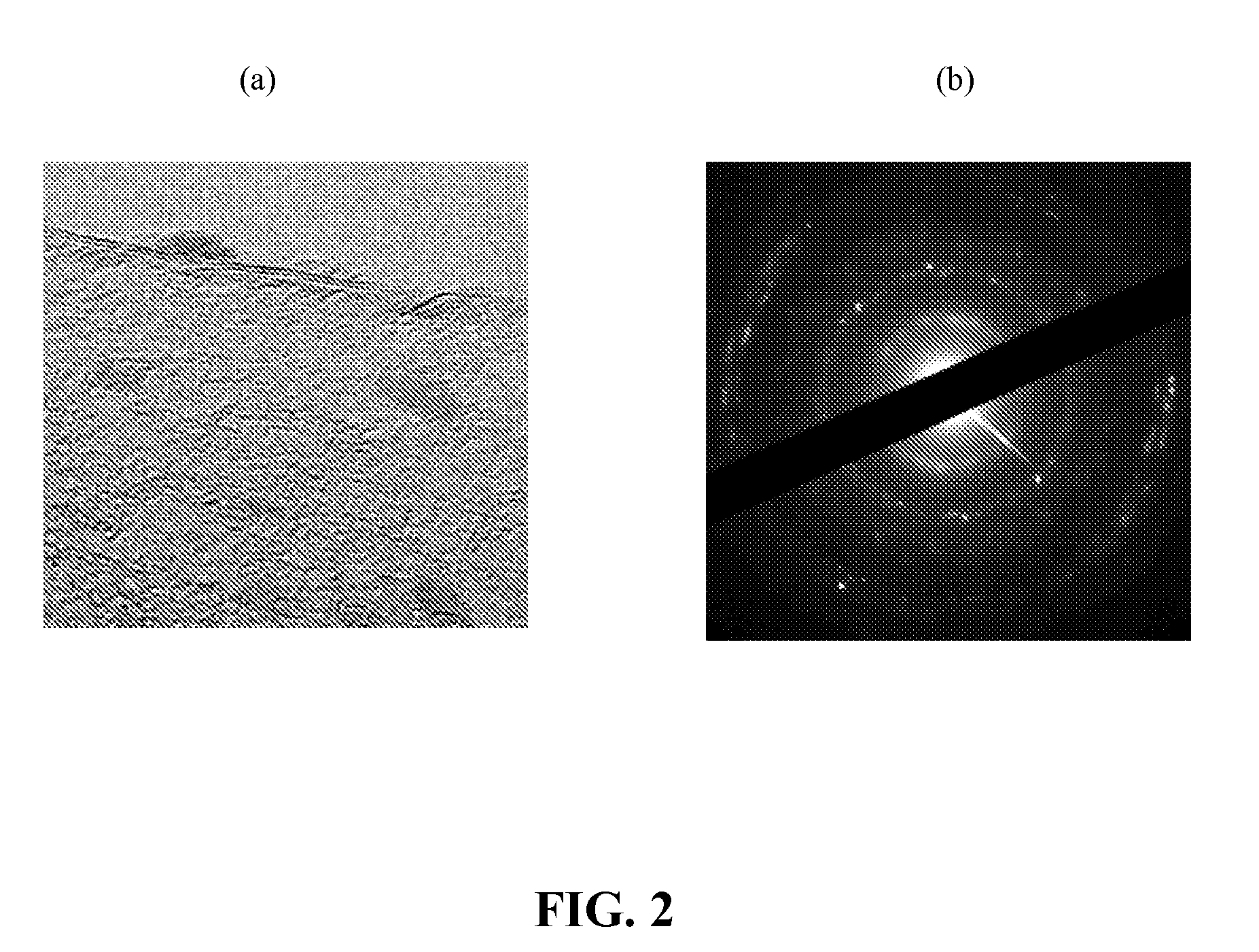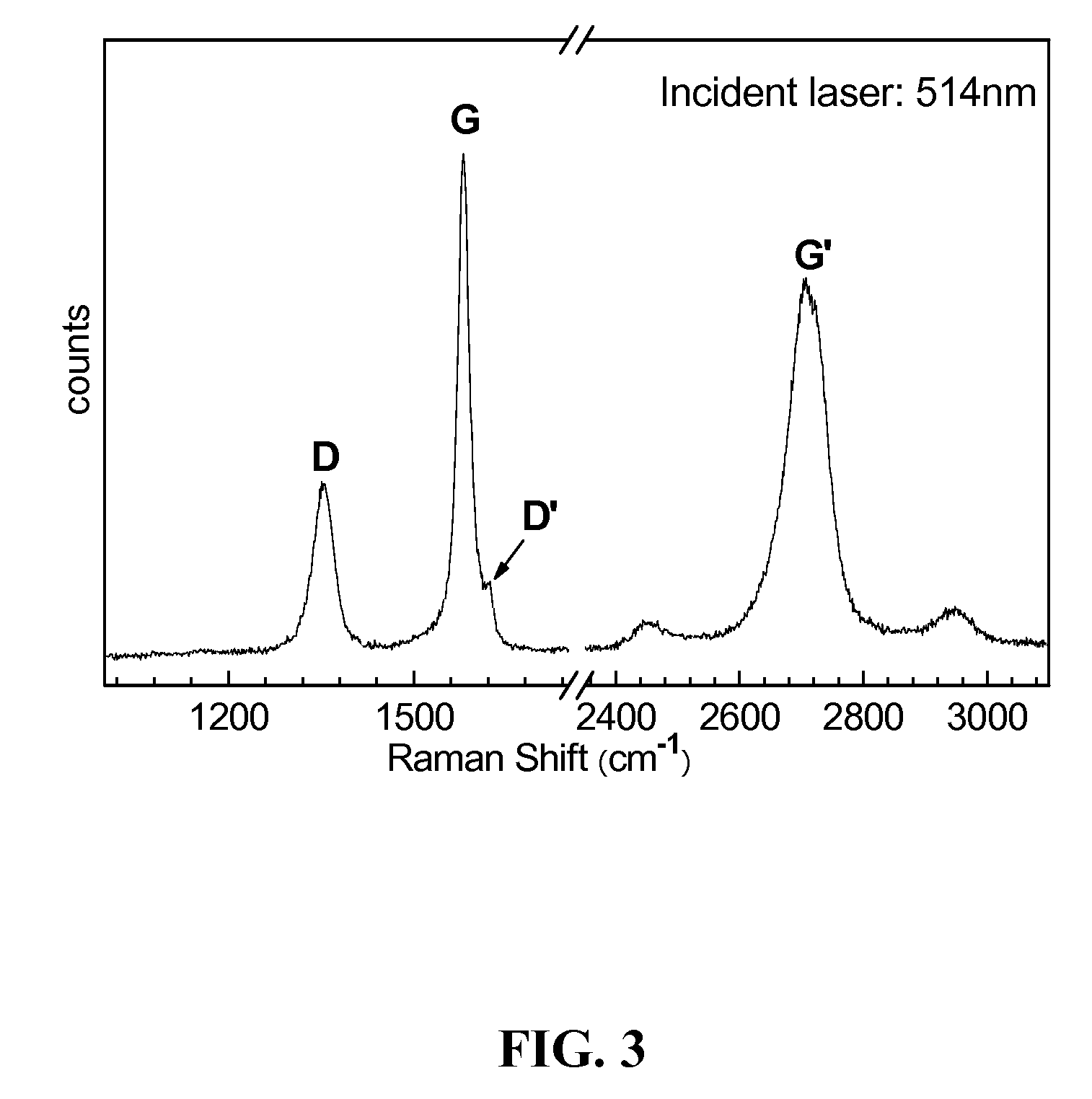Carbon Nanoflake Compositions and Methods of Production
a carbon nanoflake and composition technology, applied in the field of carbon nanostructure compositions, can solve the problems of less than ideal for research studies and practical applications, and the graphite plate cannot be oriented on a surface, and achieve the effects of novel morphology, and improving the uniformity of heigh
- Summary
- Abstract
- Description
- Claims
- Application Information
AI Technical Summary
Benefits of technology
Problems solved by technology
Method used
Image
Examples
Embodiment Construction
[0032]The embodiments of the present invention provide carbon nanoflake (CNF) compositions, methods of making these carbon nanoflake compositions, and methods of using the carbon nanoflake compositions. The CNF can come in a variety of forms as discussed in detail herein. Generally speaking, the CNF are sheet-like forms of graphite of varying dimensions.
[0033]Unless otherwise noted, the terms “a”, “an”, or “the” are not necessarily limited to one and may refer to more than one. For example, “a carbon nanoflake” may refer to two or more carbon nanoflakes. Unless otherwise noted, the term “between” followed by a number range is inclusive of the endpoints. For example, the phrase “between 1 and 1000” means 1, 1000, and anything in between those two endpoints.
[0034]Methods of Making Carbon Nanoflakes
[0035]In some embodiments, radio frequency plasma enhanced chemical vapor deposition (RF-PECVD) may be used to form CNF with or without the use of nanoparticle lithography and with or withou...
PUM
| Property | Measurement | Unit |
|---|---|---|
| thickness | aaaaa | aaaaa |
| thickness | aaaaa | aaaaa |
| height | aaaaa | aaaaa |
Abstract
Description
Claims
Application Information
 Login to View More
Login to View More - R&D
- Intellectual Property
- Life Sciences
- Materials
- Tech Scout
- Unparalleled Data Quality
- Higher Quality Content
- 60% Fewer Hallucinations
Browse by: Latest US Patents, China's latest patents, Technical Efficacy Thesaurus, Application Domain, Technology Topic, Popular Technical Reports.
© 2025 PatSnap. All rights reserved.Legal|Privacy policy|Modern Slavery Act Transparency Statement|Sitemap|About US| Contact US: help@patsnap.com



